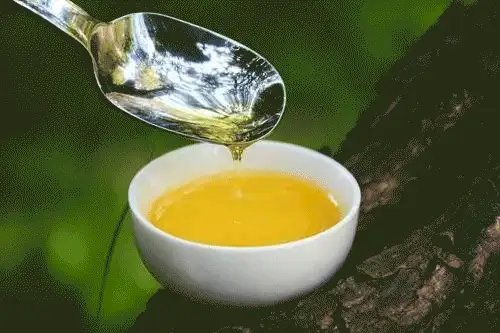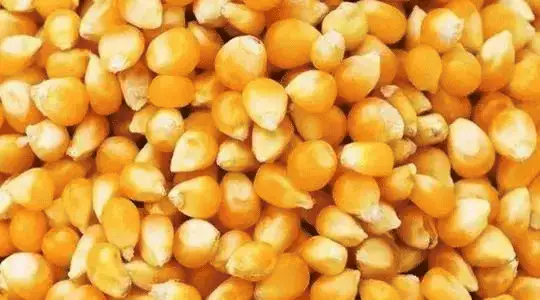What Kinds of Products Are Manufactured Using Maize as a Primary Ingredient?
Maize, commonly known as corn in many parts of the world, is not just a staple food; it's a cornerstone of agricultural economies across the globe. Originating from ancient Mesoamerica over 10,000 years ago, maize has evolved under human cultivation into one of the most versatile crops, supporting billions of people not just nutritionally but economically.
Dr. James Peterson, an agronomist at the International Crop Research Institute, states, "Maize is unique due to its incredibly diverse genetic base. This allows it to thrive across different climates and conditions, making it globally significant." This adaptability has enabled maize to become a predominant agricultural product in countries ranging from the vast plains of the United States to the highlands of Kenya, each utilizing the crop according to local needs and culinary traditions.
Moreover, maize plays a pivotal role in various industries beyond just food production. It is a key ingredient in products ranging from biofuels to bioplastics, illustrating its extensive utility in both traditional and modern applications. The significance of maize extends through the agricultural, energy, and manufacturing sectors, proving it to be one of the most influential crops driving innovation and sustaining global economies.
This broad utility highlights why understanding maize's applications—from basic sustenance to advanced industrial products—is crucial for appreciating its impact on our daily lives and the global economy.

Common Maize-Based Food Products
Maize's flexibility in culinary use is showcased by its transformation into a variety of food products that cater to diverse tastes and dietary needs around the world. One of the most fundamental forms of processed maize is cornmeal, which serves as a staple ingredient in numerous dishes. Cornmeal is ground from dried maize and is essential in both cooking and baking. It forms the base for cornbread, a popular component of American Southern cuisine, and is also used in making polenta, an Italian staple.
Another universally loved product derived from maize is popcorn. This snack is made from a specific type of maize that possesses a high moisture content in its kernels, which causes them to explode when heated. Popcorn's popularity spans across various cultures and is a prime example of maize’s versatility as a snack food.
Furthermore, maize is crucial in Mexican and Central American cuisines, most notably in the form of tortillas and tacos. Tortillas are made from nixtamalized maize, where the grain is soaked and cooked in an alkaline solution, typically lime water, and then ground into dough known as masa. This dough is then used to make not only tortillas but also other traditional dishes such as tamales and enchiladas.
Dr. Ana Gomez, a culinary historian at the University of Mexico City, notes, "Maize is not just a food ingredient; it's a cultural heritage that shapes the dietary foundation of the region. The preparation methods like nixtamalization enhance its nutritional value and have been passed down through generations."
These examples—cornmeal, popcorn, and tortillas—highlight maize's integral role in culinary traditions and its adaptability to various forms of consumption, making it an invaluable resource in global food industries.
Corn Flake Production Line
The Corn Flake Production Line represents a significant advancement in the cereal manufacturing industry, epitomizing how maize is processed into one of the most popular breakfast foods globally. The process begins with selecting high-quality maize, which is then cleaned and cooked. The cooked maize is subjected to a rolling process to create flakes, which are then toasted to achieve the desired crunchiness.
Key machinery involved in this process includes cleaners, conditioners, flakers, and ovens. Each piece of equipment is crucial for ensuring the consistent quality and texture of the corn flakes. For instance, the flaker precisely compresses the cooked maize kernels into thin flakes, which are then evenly toasted in large industrial ovens to enhance their flavor and prolong shelf life.
The economic significance of corn flakes in the breakfast cereal market cannot be overstated. According to industry analyst Sarah Thompson, "Corn flakes are not just a staple item in households around the world, but also a major player in the global food market, driving significant revenue in the breakfast segment. Their production involves sophisticated technology and substantial investment, reflecting their importance to the food industry."
This segment of the maize industry highlights not only the versatility of maize as a raw material but also the technological advancements that have allowed for the large-scale production of a universally cherished product. The Corn Flake Production Line is a testament to the innovation and efficiency achieved in modern food processing, ensuring that corn flakes remain a breakfast favorite in markets worldwide.
Industrial and Commercial Uses of Maize
Beyond its widespread use in the food industry, maize serves as a fundamental component in several industrial and commercial applications, further showcasing its versatility and economic significance.
One of the most impactful uses of maize in the industrial sector is as a source of biofuel. Maize is converted into ethanol, a renewable fuel that significantly reduces carbon emissions compared to conventional fossil fuels. Ethanol production involves fermenting the starch in maize to produce alcohol, which is then blended with gasoline to create a more eco-friendly fuel alternative. According to Dr. Leonard Foster, an energy researcher at the Green Tech Innovation Center, "Using maize for ethanol production not only helps in reducing our dependence on oil but also utilizes an agricultural product that can be regrown annually, making it a sustainable choice."
Maize also plays a crucial role in animal feed. It provides a high-energy ingredient in feed mixes for poultry, cattle, and pigs, helping to meet the nutritional needs of livestock efficiently. The high carbohydrate content in maize makes it an excellent energy source, vital for the growth and productivity of farm animals.
Additionally, maize is a primary source of starch used in numerous manufacturing processes. This starch is extracted and refined from maize kernels and is employed in the production of adhesives, paper products, and even textiles. The versatility of maize starch makes it invaluable across various sectors, including food processing where it's used as a thickening agent, and in pharmaceuticals as a binder in tablets.
These industrial uses highlight how maize transcends the boundary of food and enters into numerous sectors, emphasizing its importance not just as a dietary staple but also as a key industrial commodity. Its applications in biofuel, animal feed, and as a source of starch underscore maize's critical role in supporting both sustainable energy practices and economic growth in various industries.

Innovative Maize Products in Modern Markets
Maize is not only a staple in traditional industries but also at the forefront of innovation in modern markets, contributing to advancements in health, cosmetics, and sustainable materials.
In the pharmaceutical industry, maize starch is increasingly used as an excipient in medication capsules and tablets. Its role is crucial for ensuring that drugs are delivered safely and effectively within the body. Maize starch acts as a filler and disintegrant, which helps in the dissolution or disintegration of pills, making them easier to absorb. Dr. Helen Richards, a pharmaceutical scientist, explains, "Maize starch is preferred for its natural origin and compatibility with a wide range of active pharmaceutical ingredients, making it an essential component in modern drug formulations."
The cosmetic industry also utilizes maize-derived products. The fine texture of maize starch is used in powders, foundations, and blushes, where it serves as an oil-absorbent and skin-softening agent. This natural alternative is favored for its gentleness and effectiveness, providing a viable option for consumers seeking products with fewer synthetic additives.
Moreover, maize is making a significant impact in the field of biodegradable plastics. Polylactic acid (PLA), derived from maize starch, is used to produce eco-friendly packaging solutions and disposable items that are compostable. These bioplastics are gaining popularity as they help reduce reliance on petroleum-based plastics, which are a major source of environmental pollution. Sustainability expert Laura Green notes, "Bioplastics from maize are a promising step towards reducing plastic waste, offering a biodegradable solution that can decompose in less than a year under the right conditions."
These innovative uses of maize highlight its adaptability and potential in addressing modern challenges. By entering diverse markets such as pharmaceuticals, cosmetics, and sustainable materials, maize continues to demonstrate its vast potential beyond traditional agricultural and food applications, paving the way for a more sustainable and health-conscious future.
Conclusion
Maize, one of the world's most versatile and widely used agricultural products, plays a pivotal role across various sectors. Its journey from staple food to a key component in innovative industries highlights its significant global impact. Whether it's through the traditional food products like cornmeal and tortillas, vital industrial uses such as biofuel and animal feed, or cutting-edge applications in pharmaceuticals and biodegradable plastics, maize proves to be an indispensable resource.
The future prospects for maize-based products are promising, given the ongoing advancements in technology and an increasing focus on sustainability. As the demand for eco-friendly and health-conscious products continues to rise, maize's role in these markets is expected to expand further, reinforcing its importance not only as a nutritional powerhouse but also as a sustainable option for future generations.
In summarizing the critical roles maize plays, it becomes evident that this crop is more than just a food source—it's a cornerstone of innovation and environmental stewardship. The ongoing research and development in maize-based technologies are set to enhance its utility and efficiency, promising a greener and more resourceful future.

FAQs: Common Questions About Corn Flake Production Line
Q1: What is a Corn Flake Production Line?
- A1: A Corn Flake Production Line is a series of industrial machines and processes designed to manufacture corn flakes efficiently. This includes steps such as mixing, cooking, rolling, drying, and packaging. The entire process is optimized to maintain high standards of quality and hygiene.
Q2: How does a Corn Flake Production Line ensure product quality?
- A2: Quality assurance in a Corn Flake Production Line involves multiple stages of testing and monitoring. From the initial selection of high-quality maize to continuous checks during the processing phases—like cooking temperature and flake thickness—each step is carefully controlled. Advanced sensors and quality control systems are integral to maintaining consistent standards.
Q3: What are the key machines used in a Corn Flake Production Line?
- A3: Essential machinery in a Corn Flake Production Line includes:
- Conditioners, which prepare the maize by adding moisture and heat.
- Extruders, which cook the maize under pressure before it is flattened.
- Flaking rolls, crucial for shaping the cooked maize into thin flakes.
- Ovens, used for toasting the flakes to enhance flavor and texture.
- Coolers, which bring the flakes to the appropriate temperature for packaging.
- Packaging units, which measure and seal the corn flakes into bags or boxes, ensuring they are ready for distribution.
Q4: What are the economic benefits of using a Corn Flake Production Line?
- A4: Using a Corn Flake Production Line offers significant economic advantages such as increased production capacity, reduced labor costs, and minimized product waste. The automation of the line allows for consistent output and efficient scaling of production to meet consumer demand, making it a cost-effective solution for cereal manufacturers.
Q5: How can a Corn Flake Production Line be customized for different market needs?
- A5: A Corn Flake Production Line can be customized in various ways to adapt to different market requirements. This includes adjusting the formulation for different flavors and nutritional content, altering the shape and size of the flakes, and integrating versatile packaging solutions to cater to different consumer preferences and regional standards.
Q6: What future innovations are expected in Corn Flake Production Lines?
- A6: Future innovations in Corn Flake Production Lines may include further automation and integration of AI technologies for enhanced efficiency and precision. Developments in sustainable production practices, such as energy-efficient machinery and waste reduction techniques, are also anticipated. Additionally, the adaptation of lines to produce gluten-free or fortified corn flakes could meet evolving dietary trends.












